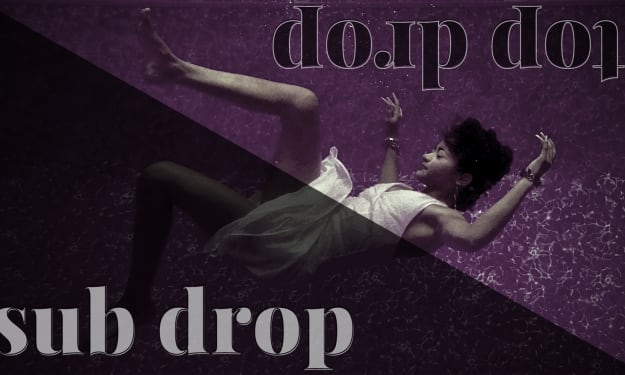Safewords 202: Beyond The Basics
what you may not know about safewords

When it comes to safewords, there are a lot of introductions out there, including a great one here on Vocal. But what if you’re already familiar with safewords on a 101 level - what they are, how to use them - and want to go a bit beyond the basics?
Here are some aspects of safewords that aren’t as frequently discussed, but are still important! Many experienced BDSM practitioners figure this stuff out on their own as they learn and grow, but you don’t have to be stuck with trial and error.
Safewords Don’t Have To Be Words
It’s right there in the name, right - safewords are words! Not always. There are plenty of situations during a scene where someone might not be able to speak, either because they’re being physically prevented or because they’re in subspace and not feeling very verbal.
In those cases, safewords can be any kind of signal. Some people use a ball, a ring of keys, or another thing that can be held in the hand and, if dropped, works the same as a safeword. Closing your eyes for an extended period of time can be another signal, or tapping/kicking a certain number of times.
If people are very experienced with each other, even just the type of noise or movement a person makes can indicate how they’re feeling. Being tuned in with your partner can reduce your need for safewords by making use of nonverbal communication to check in with each other. It’s still important to have a pre-negotiated signal for ending or adjusting the scene, but experience gives you more flexibility and clarity.
Safewords Aren’t Just For Subs
Most discussions about safewords focus on the submissive partner’s use of safewords, and they are critical for a sub’s safety and comfort! But anyone involved in a scene can use the safeword, including the dominant partner.
A person in a dominant role may choose to safeword if they’re uncomfortable with something that’s going on in the scene, if the energy of the scene has gotten away from them, if something in their body needs attention, or for any other reason! It’s less common for dominants to use safewords, because they can usually change something about the scene or wind it down on their own, but it’s very important that everyone involved in a BDSM scene has full access to the safeword and that their choice to safeword will be respected.
Safewords Don’t Always Mean “Stop”
When people first hear about safewords, they usually learn that a safeword is one clear utterance that will call an entire scene to a halt. While it’s good to have a way to communicate this, not all safewords have to mean “everything needs to stop and we need to leave our roles and address the problem now, please.” This leads to people thinking that if a safeword is used, it means that something has “gone wrong.” But really, safewording should be a flexible tool in your kinkster toolbox that works however you need it to!
A person might safeword because their physical limits are being pushed, even if emotionally and psychologically they’re having a great time. They might want to continue everything about the scene except one particular thing that their body has just had enough of. Or, they might just want to take a pause and do an emotional check-in with their partner about something before slipping back into in-scene roles.
Many BDSM practitioners use the “stoplight” system, where the safewords are names of colors that can communicate various things. Generally, it goes like this:
- Red - something is wrong and I need the scene to stop so we can address it
- Orange - something is wrong, but it can be addressed without stopping the scene
- Yellow - something isn’t yet wrong, but a limit is being approached
- Green - everything is great and nothing needs to change!
For example, take a scene where the submissive partner is tied in a bondage position and one of their arms is starting to feel numb or painful. They don’t need the dominant partner to stop everything and take them entirely out of bondage, but they do need an adjustment to their arm for the sake of safety and comfort. That situation calls for “orange,” not “red.”
Or, imagine a scene where the submissive partner is being spanked. They are having a good time squealing and thrashing in pain, but they can tell that soon the pain will shift from “fun pain” to “too much.” They don’t want their partner to stop the scene, but they do need to communicate that it might be time to go lighter or switch to a different type of pain play. Using “yellow” lets their partner know that they’re approaching a limit, so the dominant partner can do what they need to in order to keep the scene fun and pleasurable for everyone without needing to stop completely.
Safewords Aren’t The Only Type Of Check In
Did you notice the inclusion of “Green” in the list of traffic light words above? Some people might wonder why a system for safewords includes something that means the opposite - keep going!
This is usually called a “check in,” and it helps the different partners in a BDSM scene easily communicate without needing to fully leave their in-scene roles. Within a BDSM scene, typical methods of verbal communication and body language can become a bit warped - sounds and motions that indicate pain, for example, usually mean “I don’t like that,” but not necessarily in a kink context! Add that to the fact that many people act very differently when they’re in subspace, and it can be hard for the dominant partner to read and interpret signals.
That’s where check ins come in. People can ask each other for their “color” during a scene, and hearing a “green!” response is reassurance that everything is working well and their partner is doing okay. Or, someone can use the term “green” to indicate that they very much want something to continue.
Some people find verbal check ins to be distracting, and they can be difficult to incorporate into certain types of scenes and roles. In that case, a non-verbal check works just as well! One common method is the hand squeeze - when you squeeze your partner’s hand, if they squeeze back, they are telling you that they’re fine and enjoying themselves. Returning a kiss is another method.
Safewords Aren’t The Only Way To Say “Stop”
BDSM is not magic, and scenes don’t happen outside of the laws of physics and basic human decency. A safeword is not the only thing that can, or should, stop a scene. There are other ways to communicate with a partner during a scene beyond using a safeword.
In fact, unless a scene has been explicitly negotiated to include “resistance play,” many people find that using plain English works well. Saying “I don’t like that” or “Could you use a different word, please” or “I think my arm is bound too tight” can be easier and more comfortable than messing around with a secret code. When two people are familiar with each other as play partners, sometimes just the tone of voice is enough - there’s often a difference between a sensual moan of pleasure-pain and “Ouch!”
Again, while it’s good to have a safeword agreed upon in advance, you can also include other ways of checking in during a scene.
Safewords Build Trust When Used Correctly
It should never feel embarrassing or unsafe to use a safeword. Whenever anyone involved in a BDSM scene safewords, everyone else is immediately obligated to honor that safeword, then respond with gratitude for that person’s honesty. It is everyone’s job to make it completely acceptable to use a safeword. No one should feel like their “kinkster cred” is being threatened or like their partner will be frustrated or disappointed.
The use of a safeword should never be taken to indicate that something has gone wrong or that someone has failed. Instead, it should be celebrated, because it means that everyone is being honest about their needs and limits, and that they trust each other.
I’ve often found that trust deepens between people after the first time a safeword is used. The person who safeworded learns that their partner will, in fact, respect their use of a safeword. And the other person learns that their partner will, in fact, speak up if something’s not working for them, which allows them to let go of anxiety and trust that they can follow the energies of a scene and their partner will let them know if something needs to change. Invoking a safeword should reduce anxiety, not create it.
Safewords Let You Play On The Edge
Safewords also help create the trust required for “resistance play,” where one partner takes on a role that involves protestations, struggling, or other types of resistance. Resistance play is on or near the edge for many people, and it can be especially difficult for the dominant partner without lots of trust and negotiation. Safewords are critical for this type of play, but the conversation needs to go deeper than simply picking out a shared word.
In this type of scene, safewords allow you to establish that words like “no,” “stop,” and “don’t” are being used in-role and don’t mean that the other partner actually needs to change what they’re doing. It’s a case of “only this specific word means you need to stop, and any other utterance should be understood in the context of the scene.”
If you are planning to use safewords to make resistance play possible, make sure you’ve negotiated that clearly in advance. Both partners should understand that the purpose of the safeword is to make that word the only thing that means “stop,” and that other things are expected aspects of the scene.
That still isn’t everything there is to know about safewords, but hopefully it’s encouraged you to get creative and take a closer look at how safewords can enrich your relationships and enhance your play. And if you’ve been helped out by this article, feel free to toss a tip to your friendly neighborhood hedonist!
About the Creator
Lacey Doddrow
hedonist, storyteller, solicited advice giver, desert dweller






Comments
There are no comments for this story
Be the first to respond and start the conversation.